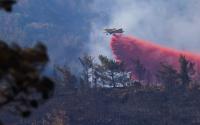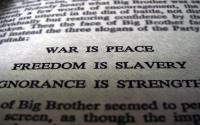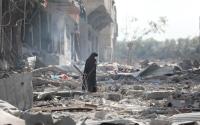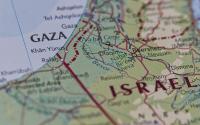Common Dreams / Published on Wednesday, August 15, 2007 by Inter Press ServiceGareth Porter
When a top U.S. commander in Iraq reported last week that attacks by Shiite militias with links to Iran had risen to 73 percent of all July attacks that had killed or wounded U.S. forces in Baghdad, he claimed it was because of an effort by Iran to oust the United States from Iraq, referring to “intelligence reports” of a “surge” in Iranian assistance.
But the obvious reason for the rise in Shiite-related U.S. casualties, — ignored in U.S. media coverage of Lt. General Raymond Odierno’s charge — is that the Mahdi Army of Moqtada al-Sadr was defending itself against a rising tempo of attacks by U.S. forces at the same time attacks by al-Qaeda forces had fallen.
In his press briefing on Aug. 5, Odierno, the second-ranking U.S. commander in Iraq, blamed the rise in the proportion of U.S. casualties attributable to Shiite militias on Iran “surging their support to these groups based on the September report” — a reference to the much-anticipated report by General David Petraeus on the U.S.’s own surge strategy.
Odierno claimed intelligence reports supported his contention of an Iranian effort to influence public perceptions of the surge strategy. “They’re sending more money in, they’re training more individuals and they’re sending more weapons in.”
He repeated the charge in an interview with Michael R. Gordon of the New York Times published on its front page Aug. 8 under the headline, “U.S. Says Iran-Supplied Bomb Is Killing More Troops in Iraq.” In that interview, he declared of Iran, “I think they want to influence the decision potentially coming up in September.”
What Odierno framed in terms of an Iranian policy, however, can be explained much more simply by the fact that the U.S. military mounted more operations on Moqtada al-Sadr’s Mahdi Army during the spring and summer.
The U.S. command has not provided any statistics on the targets of its operations in recent months, but news reports on those operations reveal a pattern of rising U.S. attacks on Mahdi Army personnel since March 2007.
Between Apr. 26 and Jun. 30, the U.S. command in Baghdad announced dozens of military operations in Baghdad — the vast majority in Sadr City — solely for the purpose of capturing or killing Shiites belonging to what were called “secret cells” — a term used to describe Mahdi Army units alleged to be supported by Iran.
In July the Mahdi Army resisted these raids in many cases. On Jul. 9, for example, U.S. troops cordoned off an area in Sadr City and began searching for members of what the U.S. command called a “criminal militia” accused of planting roadside bombs. According to the official military press release, the U.S. troops were “engaged by rocket-propelled grenades and small arms fire from numerous locations.”
In short, the rise in deaths of U.S. troops in Baghdad in July reflected the increased pace of U.S. operations against the Mahdi Army and the Mahdi Army’s military response.
Odierno conceded as much in the same press conference: “Because of the effect we’ve had on al-Qaeda in Iraq and the success against them and the Sunni insurgency,” he said, “we are focusing very much more on the special groups of the Jaish al-Mahdi [Mahdi Army] here in Baghdad.”
The major briefing by the U.S. command on alleged Iranian support for Iraqi Shiite militias in recent weeks appears to contradict Odierno’s claim that intelligence showed increased Iranian assistance to those militias. Brig. Gen. Kevin Bergner told reporters on Aug. 2 — after a “surge” in Iranian assistance had allegedly taken place — that the rate of training of militia groups in Iran had remained stable for a long time.
The transcript of the briefing also shows that Bergner did not claim any recent increase in financial assistance to the Mahdi Army.
Odierno’s reference to “sending more weapons in” continued the practice of the George W. Bush administration to claim that Iranian officials actually ship weapons to Shiite militias in Iraq, despite the fact that no evidence of such a role has been found after four years of trying.
Odierno told the New York Times that explosively formed penetrators (EFPs) accounted for one-third of combat deaths suffered by “U.S.-led forces” — including Iraqi and British forces — in July. But he said nothing about the proportion of total U.S. troops killed or wounded by them.
The Bush administration continues to assert that EFPs are provided by the Iranian government, despite numerous discoveries by U.S. forces of workshops manufacturing such devices in Iraq.
Odierno’s charges are the latest addition to an ongoing Bush administration narrative about developments in Iraq that treats all Shiite activity outside the Iraqi government as reflecting Iranian policy.
Its central theme of an Iranian policy to drive the U.S. out of Iraq by killing U.S. troops, first introduced in January, has branched out into several sub-themes, one of which is that Sadr has lost control over the Mahdi Army. The U.S. command has been claiming it has broken up into “rogue units” — also called “special groups” or “secret cells”. Those “rogue units” in turn are said to have become instruments of Iranian policy.
Although the Mahdi Army operates on a highly decentralised basis, and some units have been involved in sectarian activities that Sadr did not approve, the U.S. military has never produced evidence that a significant number of units are no longer loyal to Sadr.
The “rogue units” line has been used to suggest that those units that were loyal to Sadr were cooperating with the United States and to justify U.S. attacks on the Mahdi Army both in Baghdad and in Southern Iraq.
Gen. Petraeus claimed publicly that Sadr had agreed in talks with Iraq’s Prime Minister Nouri al-Maliki to the deployment of U.S. troops to Baghdad’s Sadr City district in return for assurances that searches and raids would be conducted in a “respectable manner”.
Sadr’s spokesman in parliament said, however, that the understanding had been that Iraqi forces would conduct searches and that U.S. troops would intervene only if they faced resistance. The spokesman said U.S. troops had violated the understanding.
At first, Sadr’s troops stayed off the streets and did not resist U.S. troops. But in March Sadr’s office denounced the U.S. troop deployment in Sadr City and called on people to take to the streets in protest. And a Shiite cleric loyal to Sadr exhorted followers at Friday prayers not to cooperate with the U.S. occupation of Sadr City.
On Apr. 8, Sadr issued a statement urged the Iraqi army and police to stop cooperating with the United States and told his guerrilla fighters to concentrate on pushing U.S. forces out of the country.
Thus it requires no Iranian hand to explain the escalation of the conflict between the Mahdi Army and the U.S. military that accounts for the changing pattern of U.S. casualties in Baghdad.
Gareth Porter is an historian and national security policy analyst. His latest book, “Perils of Dominance: Imbalance of Power and the Road to War in Vietnam“, was published in June 2005.






